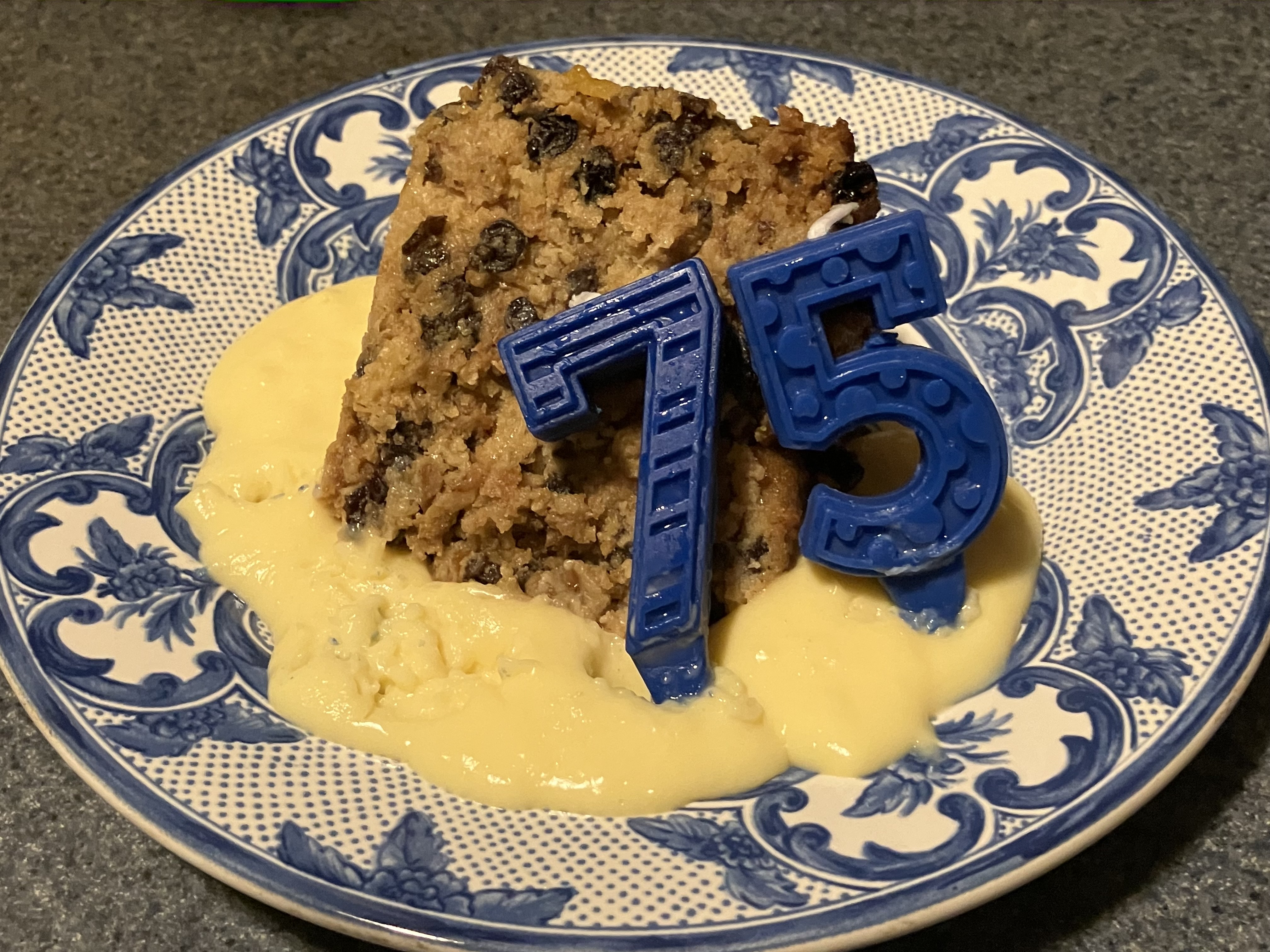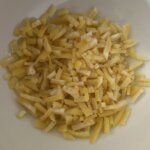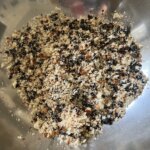The 75th Adapted Recipe from the Macculloch-Miller family cookbook!
A majority of the 160 family recipes are desserts recipes for cakes, charlottes, pies, and puddings. The handwritten cookbook belonging to the Macculloch family contains recipes for bread pudding, cottage pudding, carrot pudding, plum pudding, and chancellor pudding. Puddings were popular because they could be enjoyed throughout the year. Recipes in the winter months used dried fruits as ingredients.
Chancellor pudding, also known as cabinet pudding, was a popular steamed pudding in England. This pudding could be made either from stale bread, biscuits, or leftover cake, such as a sponge cake. While some puddings were made in cloth bags, the Macculloch family recipe specifically mentions a tin mould. The pudding batter would be steamed or baked in the mould and then turned out, or unmolded, and served on a platter with a sauce. This pudding recipe also lists suet as an ingredient. Suet was frequently used in puddings because it has a mild flavor and has the highest melting point of all animal fats used in baking. Suet and lard are not the same. Suet is the animal fat from around the kidneys of cows and sheep while lard is pork fat and is typically used in pie crusts and biscuits. Another ingredient in this recipe which may need explanation is “stoned raisins”. This ingredient is found in vintage recipes because seedless grapes were not available, as they are today, and seeds needed to be removed from raisins before cooking.
Chancellor pudding is a dense, flavorful cake-like pudding that can be enjoyed warm with ice cream or English custard.
Chancellor Pudding–Original Recipe
¾ lb. breadcrumbs
¾ lb. currants
¾ lb. suet
5 eggs
Wine glass of brandy
Peel of 2 lemons
1 nutmeg
Sugar to your taste
Milk to make it a thick batter
Rub the inside of a tin form well with butter
Line it with stoned raisins. 3 hours.
Chancellor Pudding—Adapted Recipe
12 oz. breadcrumbs (about ¾ loaf of stale bread)
8 oz. currants
12 oz. suet or vegetable shortening (freeze overnight and grate)
5 eggs
4 tablespoons of brandy
Peel of 2 lemon, remove the white pith and slice thin
2 ½ teaspoons nutmeg, freshly grated.
½ cup of sugar
1 ½ cups of milk
2 tablespoons butter, softened
1/2 cup raisins
Preheat oven to 350 degrees. Using a kitchen scale, weigh the bread, currants, and vegetable shortening. Prepare ingredients: grate nutmeg, peel lemons with peeler and cut julienne-style, make breadcrumbs using a food processor and grate frozen vegetable shortening with wide grater.
In a very large bowl mix together breadcrumbs, currants, and grated shortening. Add eggs, brandy, nutmeg, lemon peel and mix well. Add milk and sugar. Mix well. Rub the baking dish/pudding mold (recommended size no smaller than 8” wide and 3” deep) with softened butter and line with raisins. Empty the mixture into the baking dish/pudding mold.
Place the baking dish into a larger baking pan with tall sides. Pour boiling water into the larger baking pan to create a water bath. Water should be halfway up the sides. While baking, replace hot water to keep water at that level, if needed. Bake for 90 minutes. Let cool and serve with ice cream or English custard.
A recipe for small, individual puddings eh_kids_recipe.1sf.pdf (english-heritage.org.uk)
Watch a 10-minute video filmed at Audley End House and Garden by English Heritage How to Make Cabinet Pudding — The Victorian Way (youtube.com)

Topic: Munchie Monday
Age / Level: High School, College, Life Long Learner





